What is Tequila?
If you’ve been around for the last 5–10 years or so, you’ve heard of something called agave. Now, most people know agave to be a sweetener substitute for honey or sugar, but it also moonlights as the plant that birthed Tequila! That’s right, Tequila is distilled from the blue agave plant, a spiky succulent that grows throughout the five Mexican regions where distilleries make Tequila.
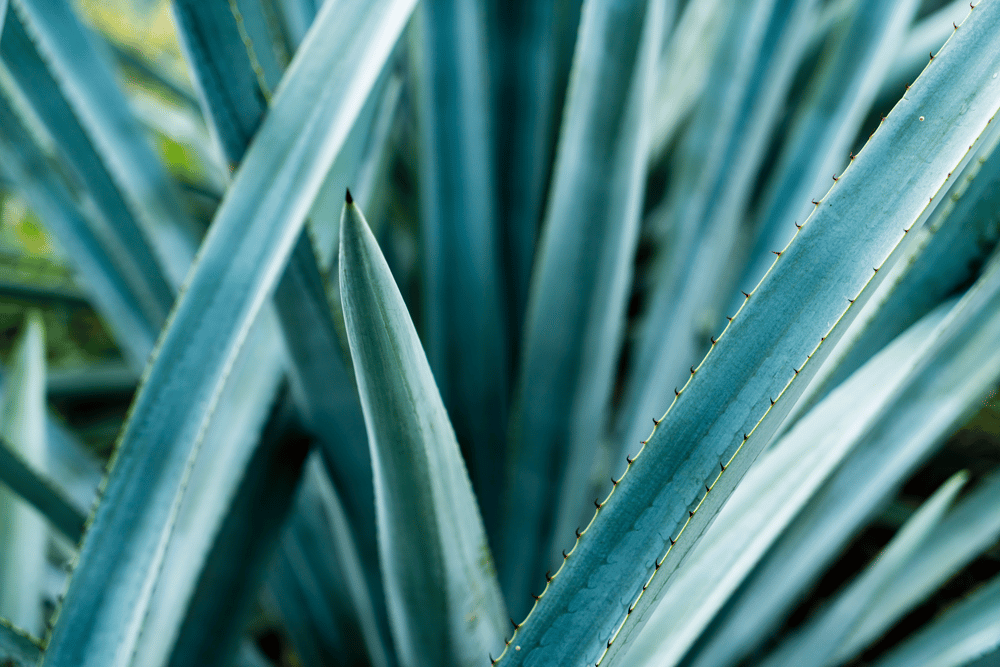
How is Tequila made?
To make Tequila, the sugary sap in the heart of the blue agave is fermented, distilled, aged (in most cases), and then bottled. Let’s break that down.
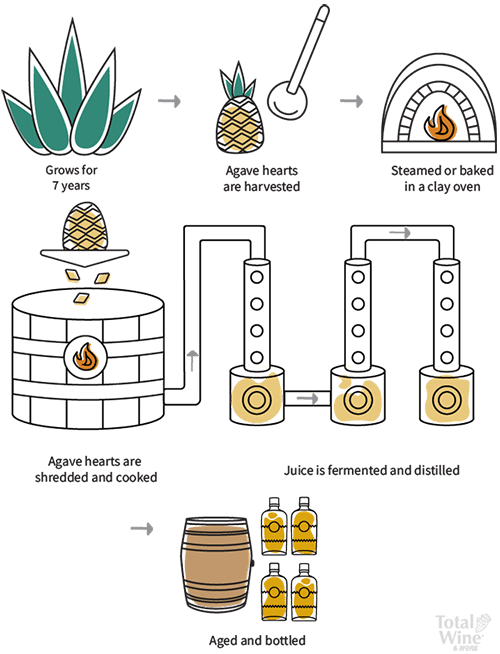
-
Step 1: Patience required! The plant can take six or seven years before it develops a sugary sap called aquamiel, “honey water” in Spanish, that forms the base of Tequila.
-
Step 2: Next, the heart of the agave plant, which is called the piña (because it looks like a giant pineapple), is harvested by hand with machetes. Then the heavy hearts are steamed or baked in a clay oven.
-
Step 3: The cooked hearts are shredded and pressed to extract the juice. That juice is fermented, and then the fermented juice is distilled in either a column still or an old-fashioned pot still. During the distillation process, Tequila retains much of the vegetal, floral, and earthy flavors coming from the agave.
-
Step 4: Depending on the intended type (see below), the finished distilled spirit can be bottled immediately or aged and bottled later.
Fun Fact:
The flavor characteristics of blue agave vary depending on the region and altitude where it was grown.
There are other spirits distilled from agave, but those are called either mezcal or Destilado de Agave. The oldest Tequila distillery is Grupo José Cuervo, which distills the famous José Cuervo Tequila, founded in 1758.
Location Matters
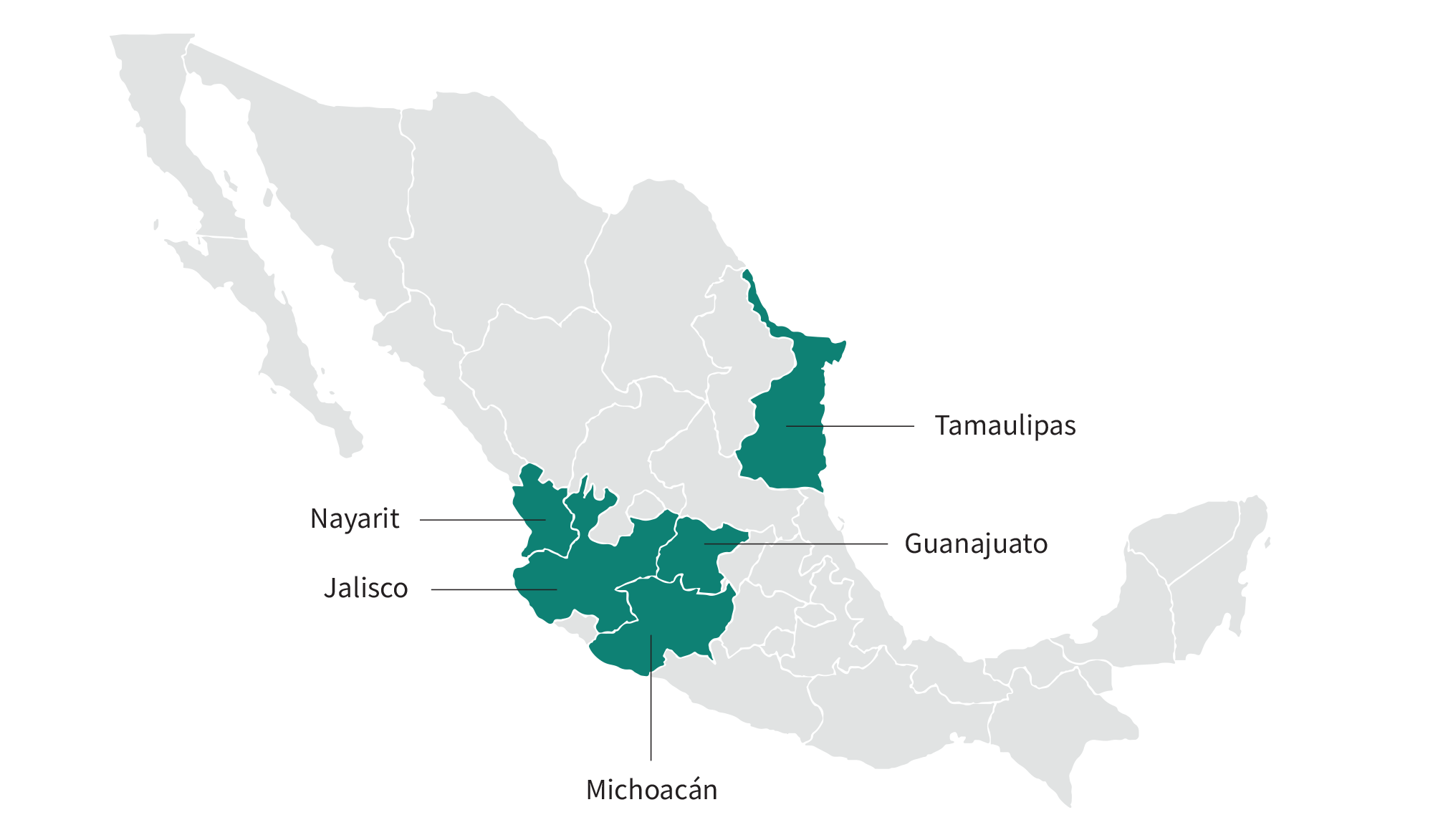
To be called Tequila, by law, it must come from one of five Mexican states: Jalisco (where you find the town of Tequila), Guanajuato, Nayarit, Michoacán, or Tamaulipas. It must also be made with the blue agave plant; otherwise, it cannot be called Tequila.
Types of Tequila
There are six (6) types of Tequila that you need to know about.
-
Blanco (Silver)
-
Joven (Gold)
-
Reposado
-
Añejo
-
Extra Añejo
-
Flavored
Tequila is classified according to the length of time the spirit is aged. As Tequila ages, it goes from a young Blanco to a more mature Añejo. During the aging process, the Tequila color and flavors deepen, and the spirit develops a smoother taste.
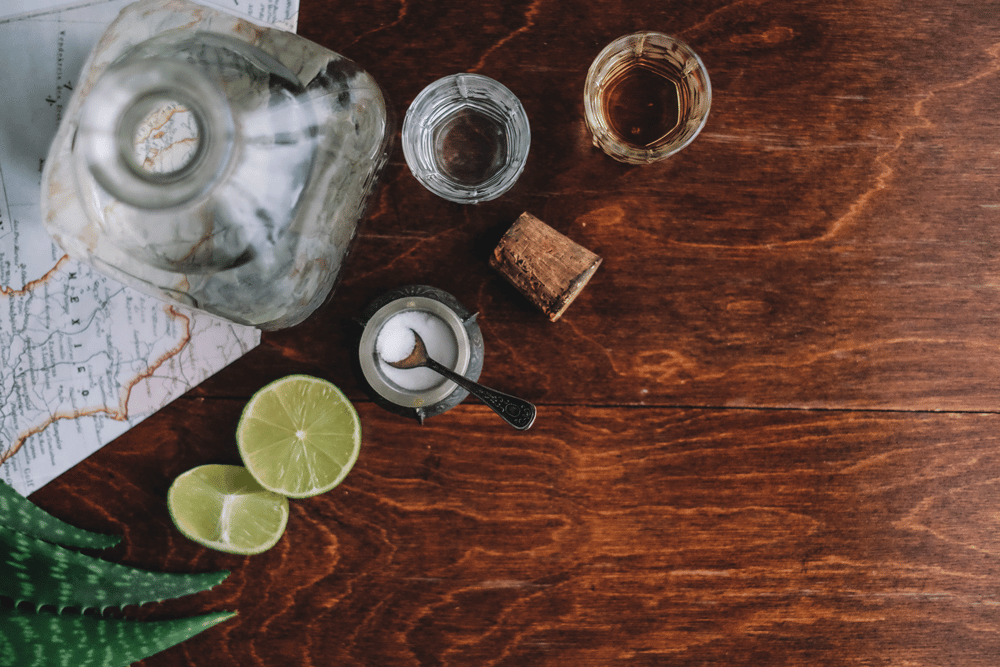
Blanco
AKA silver Tequila, Blanco can be bottled immediately or aged for up to two months and is the purest flavor of Tequila because it contains no added flavoring agents. It is also the best representation of the blue agave plant's natural sweetness.
![]()
Tasting notes: Never aged in a barrel, the most authentic taste of the agave plant, including some citrusy, spicy notes.
Joven
“Young” in Spanish, this type of Tequila is commonly referred to as gold. This Tequila derives its name from the golden color imparted upon the liquid from extracts added to change the flavor and hueue of the Tequila beyond the blue agave plant.
![]()
Tasting notes: Citrusy, spicy, sweeter than blanco
Reposado
In Spanish, reposado means "rested”. This Tequila is aged in a French or American oak barrel for 2 to 12 months, giving it time to turn a pale golden color.
![]()
Tasting notes: Bold blanco taste with caramel and honey. Depending on how long it has been aged, some can pull in flavors such as vanilla, cinnamon, or dried chocolate.
Añejo
Añejo, meaning "aged," spends one to three years in an oak barrel similar to the ones used for aging whiskey or wine. It gets smoother, darker, and the taste is sweeter thanks to the barrel.
![]()
Tasting notes: Smooth, removing the sharpness of a Blanco, adding sugary and caramelized notes.
Extra Añejo
A somewhat new type of tequila that is barrel-aged for more than three years. The spirit becomes a dark amber color.
![]()
Tasting notes: Rich with nuts, caramel, fruit, and spice, similar to whiskey or an older rum.
Fun Fact:
High-quality Tequilas have either "100% agave" or "100% blue agave" on the label as a mark of quality.
Keep in mind that the least expensive kind of Tequila is a mixto, which is a mix of 51% agave and 49% other sugars, like cane sugar, plus flavoring and coloring. Tequila made this way will only have "Tequila" on the label, and it won't mention agave.
Flavored Tequila
Chocolate Tequila
Using Mexican cacao, chocolate flavored Tequila is smooth, sweet, and delectable. Save this for a tasty after-dinner drink or sweeten up a margarita and switch out the salt for sugar.
Coconut Tequila
Combining the fresh tropical flavor of natural coconut and fresh agave, this Tequila is perfect for a refreshing summer spin on a classic Tequila Sunrise cocktail.
Almond Tequila
Also known as Amaretto Tequila, the combination of toasted agave and natural almonds produces an ideal sweetness. Great to sip on the rocks or use in a baking recipe.
Coffee Tequila
Just like regular coffee, this flavor can be highly addictive. But we mean that in the best way possible. A smooth Tequila with hints of coffee to give you that pick-me-up you’ve been looking for.
Mango Tequila
Mango is one of those fruits that goes great with pretty much everything. This flavor of Tequila is bound to make any drink you have feel that much more tropical. Get ready for vacation vibes.
Is Tequila also Mezcal?
Similar to the rule in the U.S. for bourbon whiskey, all Tequilas are Mezcals, but not all Mezcals are Tequila. While both Tequila and Mezcal are Mexican distilled spirits made from agave, Mezcal can be produced anywhere in Mexico from up to 30 different kinds of agave. Tequila is a special kind of Mezcal that must be made from blue agave in one of the five designated states in Mexico.
The finest Mezcal comes from the state of Oaxaca; it's cultural home. Making Mezcal is a more rustic process, and many makers roast their agave piñas in a pit with fire and rocks and then crush the piñas with a large stone pulled by donkeys. Letting the hearts smoke this way often produces a subtle, smoky, and earthy flavor in Mezcal.
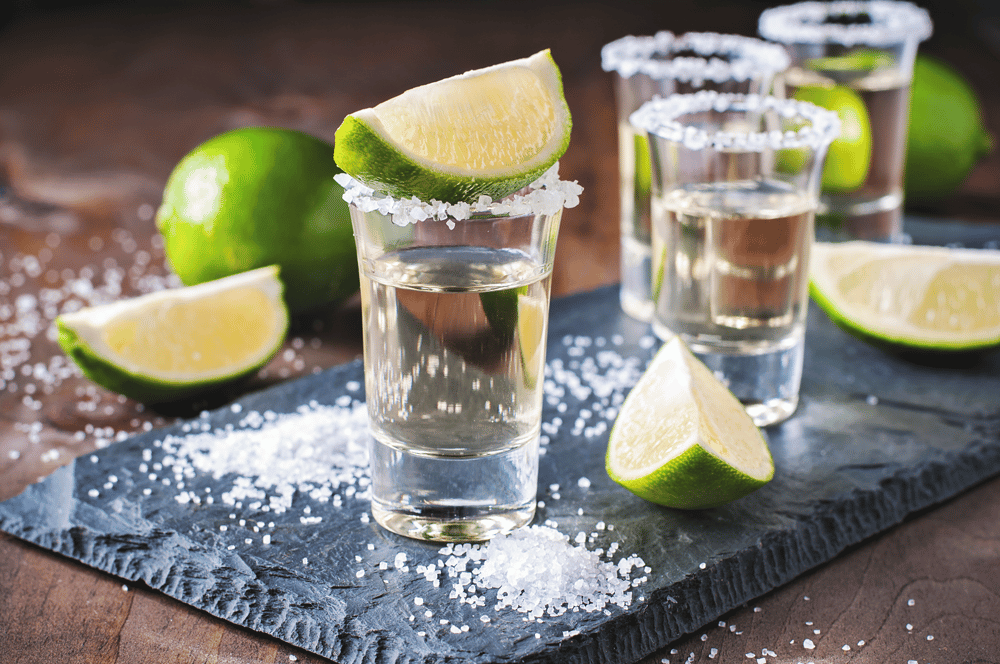
How to drink Tequila
Like most spirits, there are three ways to enjoy Tequila: neat, on the rocks, or in a cocktail.
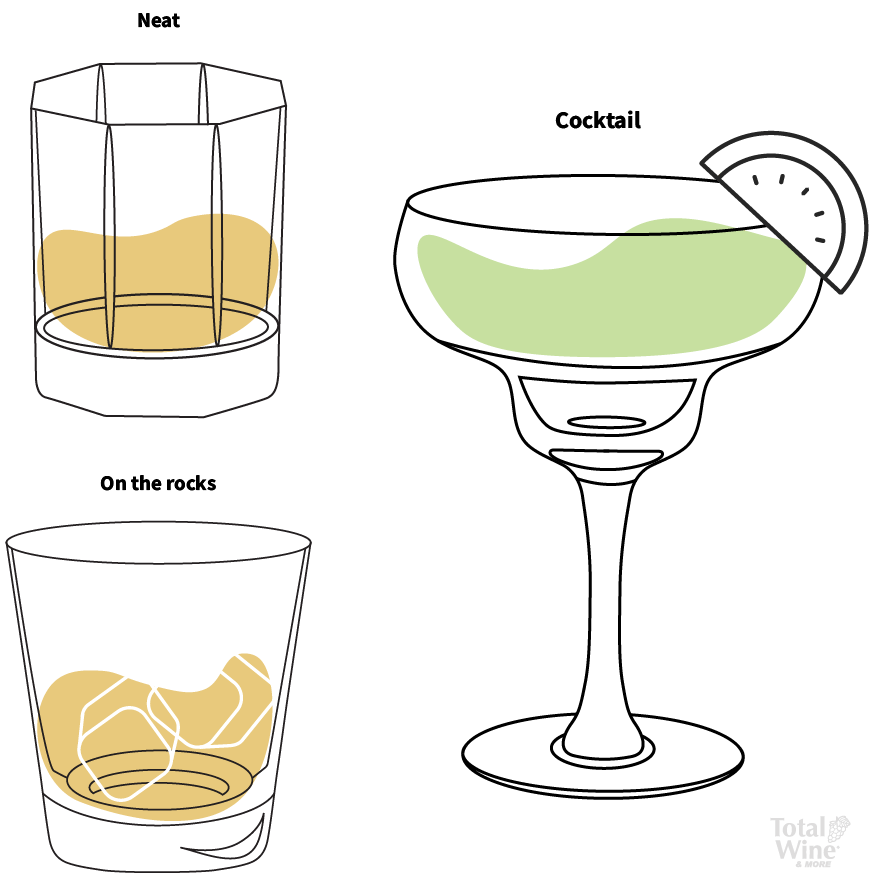
The most traditional way to enjoy a Tequila is “neat”. Simply pour some into a lowball glass by itself. No mixers, no ice, nothing — just enjoy sipping. Here’s a list of our top sipping Tequilas.
On the rocks is a fancy way to say “add some ice”. A smooth Tequila over some ice will dilute the spirit, dulling its sharpness.
Now we all know how popular Tequila is when it comes to cocktails, Margaritas especially. Other popular drinks include Bloody Maria and Paloma. Check out our favorite Tequila cocktails and try a recipe or three.
Food pairings
Pairing your Tequila with food is not easy, mainly because there are different types of Tequila to keep in mind. When pairing, try to think about the “heaviness” of the food item. Typically, the lighter the food the younger the Tequila. For example:
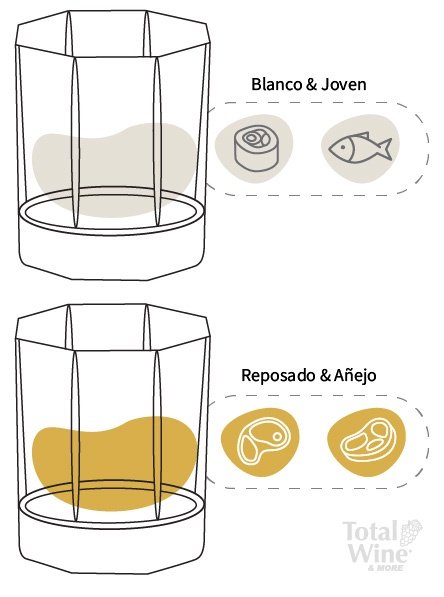
All in all, Tequila is an exceptional, very tasty spirit. Share this article and see if your friends agree!
